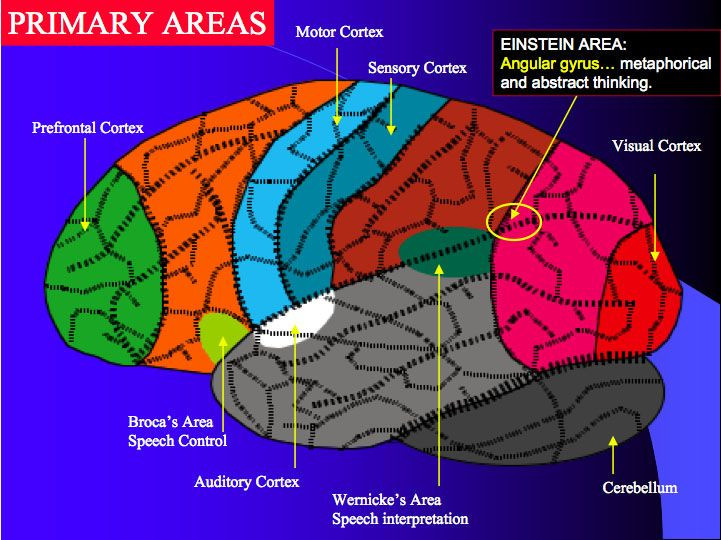Dyslexia ‘Seen’ In Brain Scans Of Kindergartners: Earlier Learning Interventions May Be Possible

Dyslexia is a learning disability that impacts up to 12 percent of the population, according to the National Institutes of Health. Common signs or symptoms include reading slowly and painfully, mixing up the order of letters when reading, a huge gap between listening comprehension and reading comprehension, and trouble spelling and writing. What may be particularly frustrating for many dyslexics is that they often possess normal or even superior intelligence — Albert Einstein, for instance, was a dyslexic as was Steve Jobs.
No cause for dyslexia has been identified, though the disability has been linked to specific genes that regulate the development of the brain, in particular the parts of the brain that focus on language. Because dyslexia tends to run in families, it is assumed to be inherited. Although there is no cure, compensatory strategies may be taught to children with the disability, which is generally diagnosed around second grade.
A new study conducted by researchers at Massachusetts Institute of Technology (MIT) and Boston Children’s Hospital provides evidence that might help identify children with dyslexia before they begin to read so that intervention can begin much earlier.
Kindergarten Study
The study, as reported by MIT News, found a relationship between poor pre-reading skills in kindergartners and the size of a brain structure known as the arcuate fasciculus. This structure is a bundle of axons (nerve fibers) that connects two language-processing areas, Wernicke’s area and Broca’s area. To participate in the study, the parents of approximately 1,000 students at schools throughout Massachusetts and Rhode Island granted permission that their child be assessed for pre-reading skills at the beginning of kindergarten.
“We were very interested in looking at children prior to reading instruction and whether you would see these kinds of differences,” said John Gabrieli, a professor of brain and cognitive sciences at MIT. Previous studies have shown that in adults who possess poor reading skills, the arcuate fasciculus is smaller and less organized than in adults who read normally. Generally, though, researchers did not understand if these differences were the cause or perhaps the result of reading inexperience.
By assessing each child for pre-reading skills, the researchers gained an understanding of each child’s abilities relative to those of others in their peer group. Next, the researchers invited 40 children to have their brains scanned using a technique that is based on magnetic resonance imaging (MRI). ‘Diffusion-weighted imaging’ exposes the size and organization of the brain’s white matter; once thought to be passive tissue, white matter consists of glial cells and axons that coordinate communication between the regions of the brain.
Brain Communications
The researchers focused on three white-matter regions previously associated with reading skills: the arcuate fasciculus, the inferior longitudinal fasciculus (ILF), and the superior longitudinal fasciculus (SLF). In particular, the arcuate fasciculus connects Broca’s area, which is involved in speech production, and Wernicke’s area, which is involved in understanding written and spoken language.
Comparing brain scans with the results of pre-reading tests, the researchers found a link between the size and organization of the arcuate fasciculus and performance on tests where the children were asked to identify and manipulate the sounds of language; strong ‘phonological’ awareness and skills — matching printed letters with already familiar sounds — have previously been identified with ease of learning to read.
Discovering a larger and more organized left arcuate fasciculus in the children with the least difficulty reading, the researchers hypothesize that such characteristics may aid communication between Broca’s area and Wernicke’s area. Because the left arcuate fasciculus is already smaller and has less integrity in kindergartners who are at risk for dyslexia, the “findings suggest a structural basis of behavioral risk for dyslexia that predates reading instruction,” wrote the authors. The researchers plan to follow three waves of children as they progress to second grade and evaluate whether the brain measures they have identified predict dyslexia.
“We don’t know yet how it plays out over time,” said Gabrieli, who hopes an early and accurate identification of dyslexia would “motivate aggressive interventions that would help these children right from the start, instead of waiting for them to fail.”
Gabrieli points out that the structural differences don’t necessarily reflect a genetic cause, as environmental influences may play a role or be a cause of these differences.
Source: Saygin ZM, Norton ES, Osher DE, et al. Tracking the Roots of Reading Ability: White Matter Volume and Integrity Correlate with Phonological Awareness in Prereading and Early-Reading Kindergarten Children. Journal of Neuroscience. 2013.



























